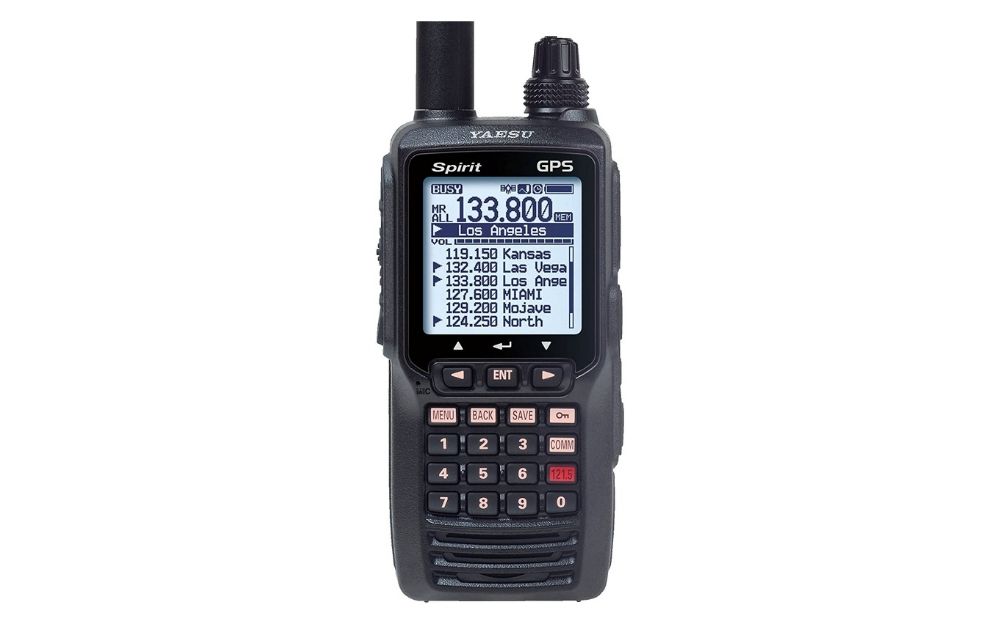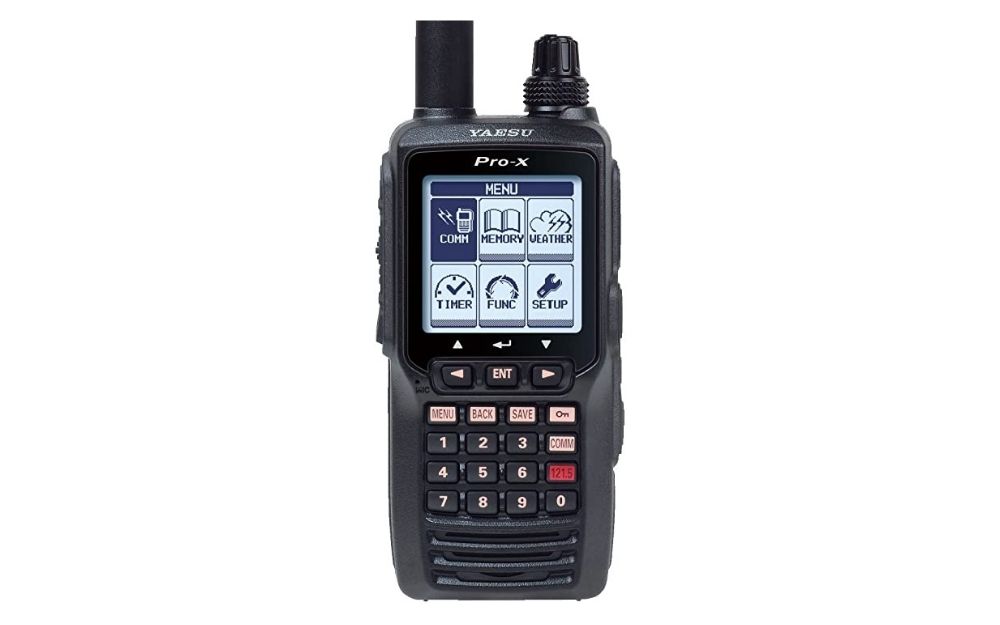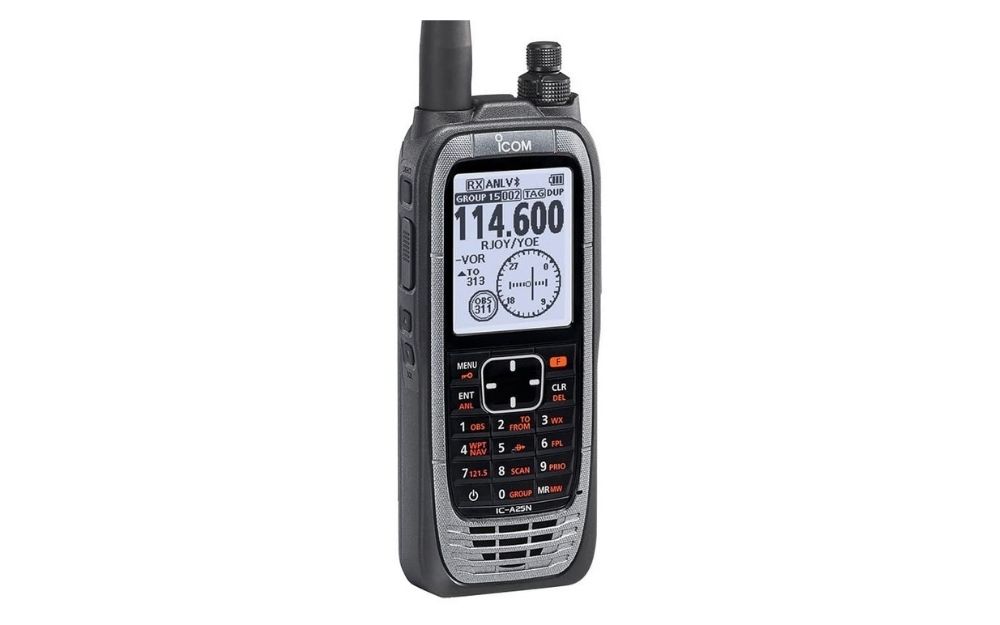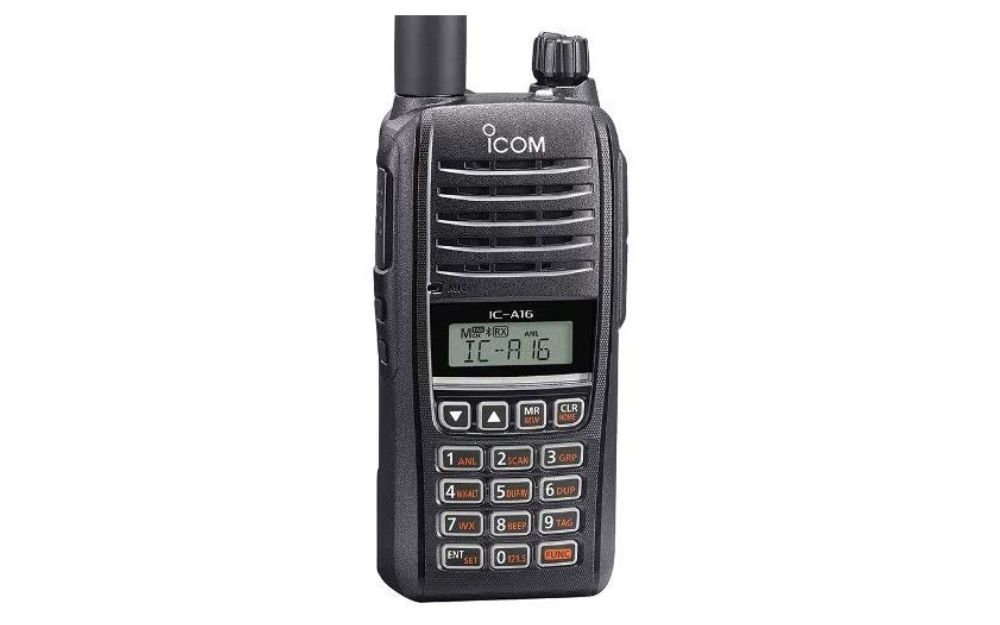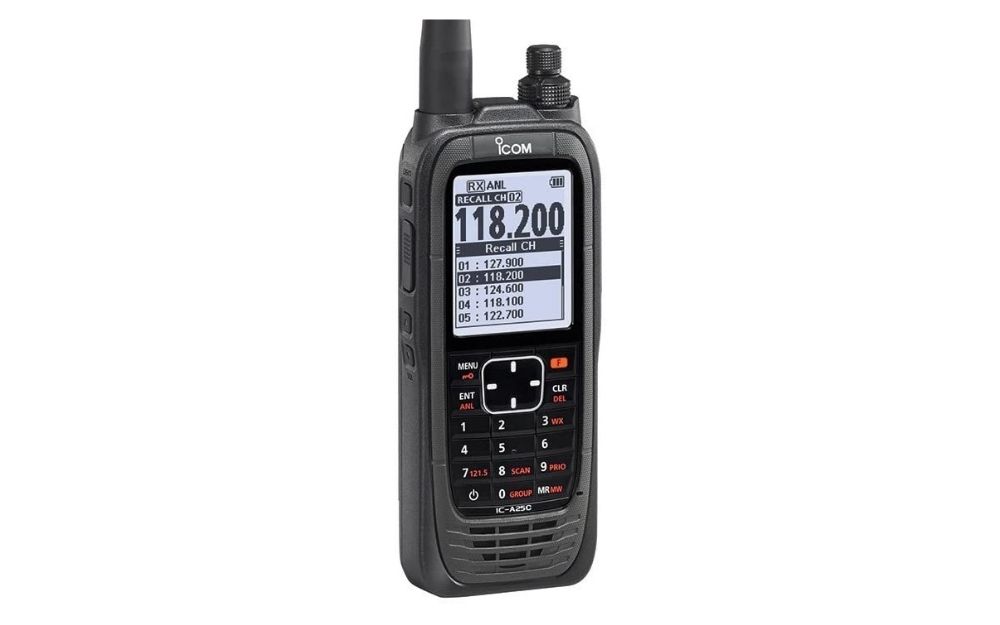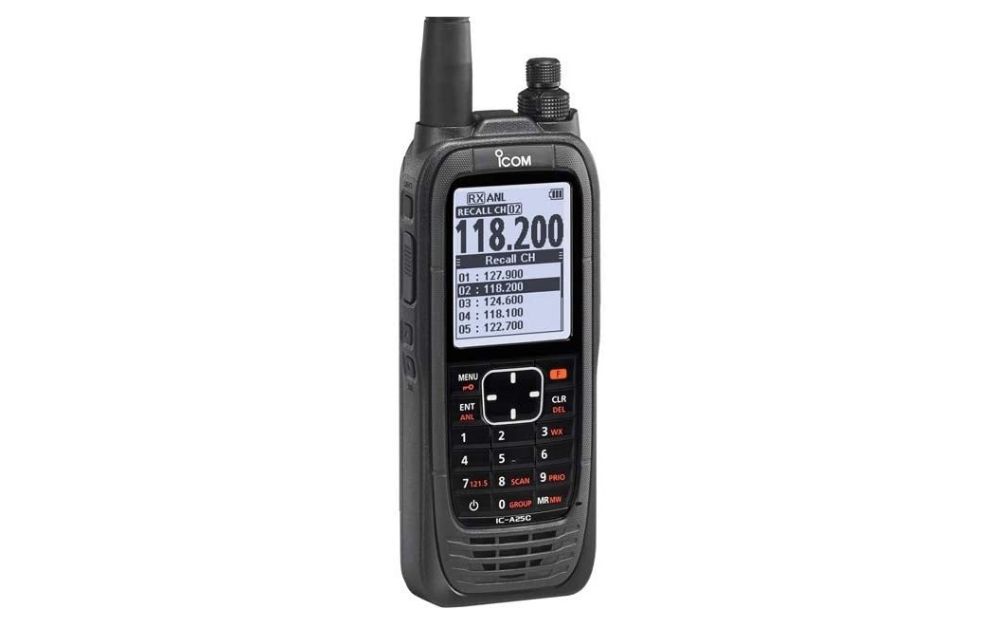Safe flying requires an excellent set of skills, but also effective communication, therefore having the appropriate device for this purpose is a ‘must’.
Aviation radio plays a key role in achieving the master skill in flying because, without communication out in the air, you won’t get anywhere.
Flight radios aren’t only suitable for experienced pilots, but also for student pilots, drone pilots, and plane spotters.
The possession of an aviation radio receiver may come in handy to many people, and it can save you tons of money as well.
As a student pilot, you may use the airband radio to familiarize yourself with the local traffic in your own time, not only during your paid lessons.
Also, if you often use rental aircraft, you may spare yourself a reasonable amount of time by not waiting for ages for your ATIS report.
What’s more, using an aircraft handheld radio is an awesome way to amuse yourself while listening to the air traffic during air shows.
See Our Best Handheld Pilot Radios
| # | PREVIEW | Product | |
|---|---|---|---|
| 1
Best Overall
1Yaesu FTA750L Handheld VHF Aviation Radio
|
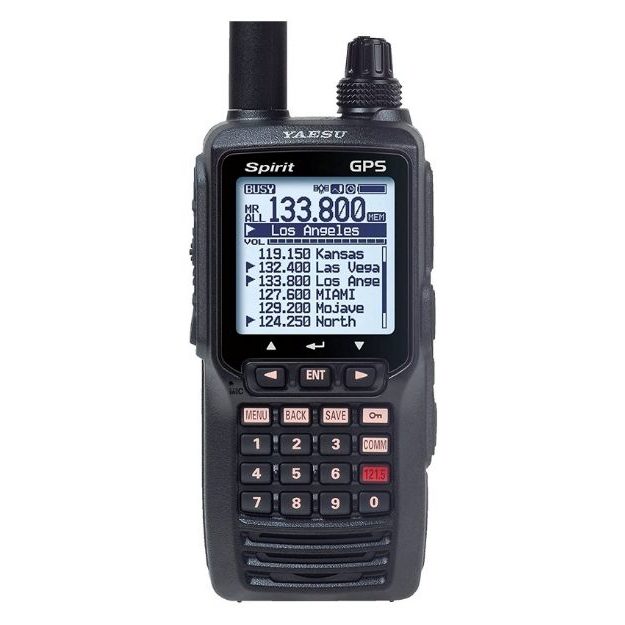
|
|
|
|
|
|||
| 2 |
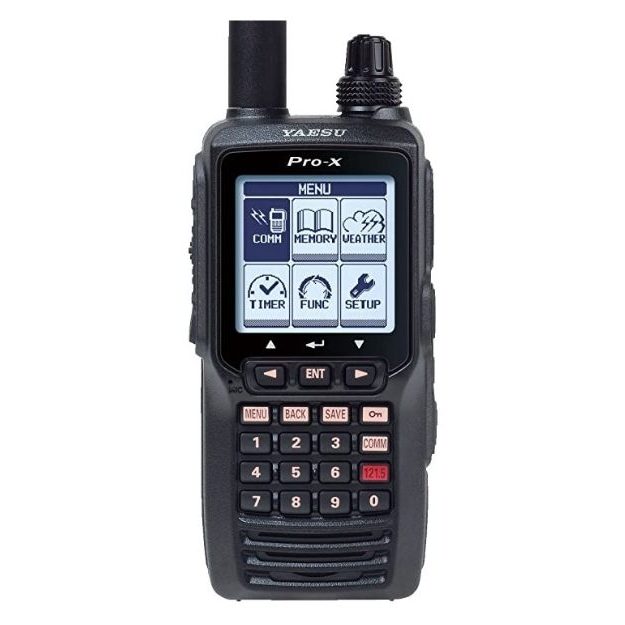
|
|
|
|
|
|||
| 3
Best For Higher Budgets
3Icom IC-A25N VHF Airband Transceiver
|
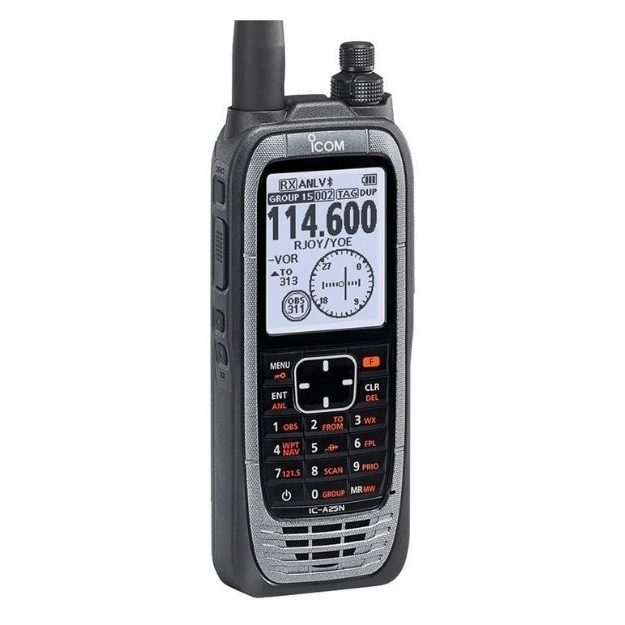
|
|
|
|
|
|||
| 4
Best For Low Budgets
4Icom IC-A16B VHF Air Band Handheld Radio
|
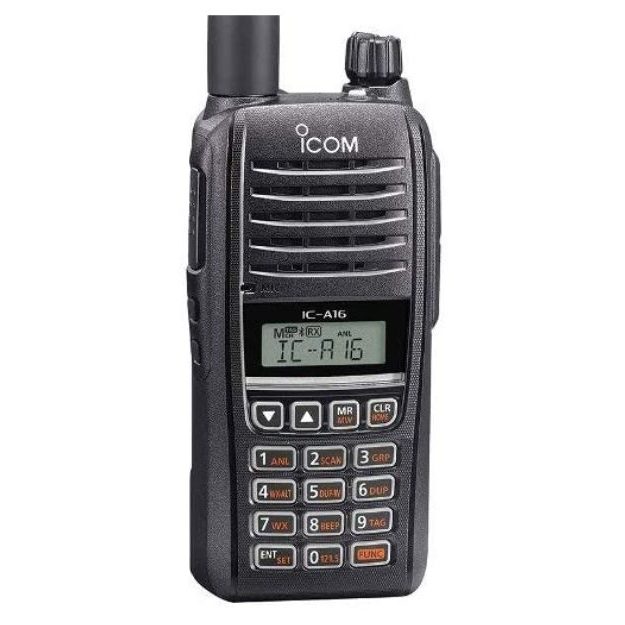
|
|
|
|
|
|||
| 5 |
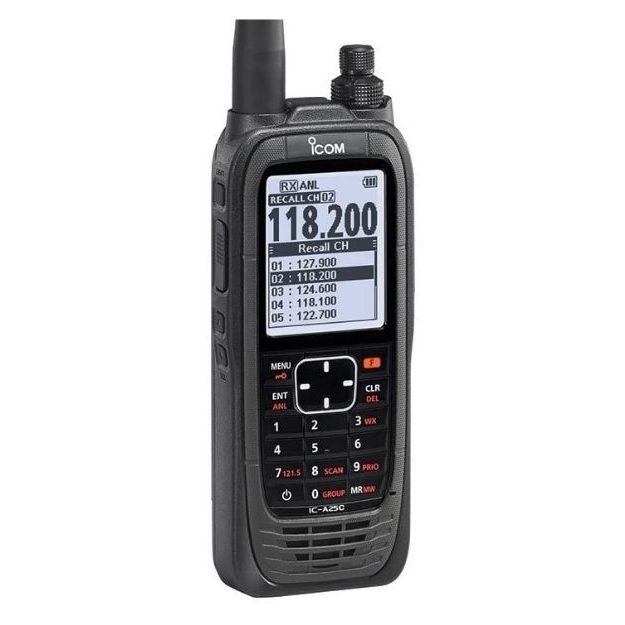
|
|
|
|
|
|||
| 6 |
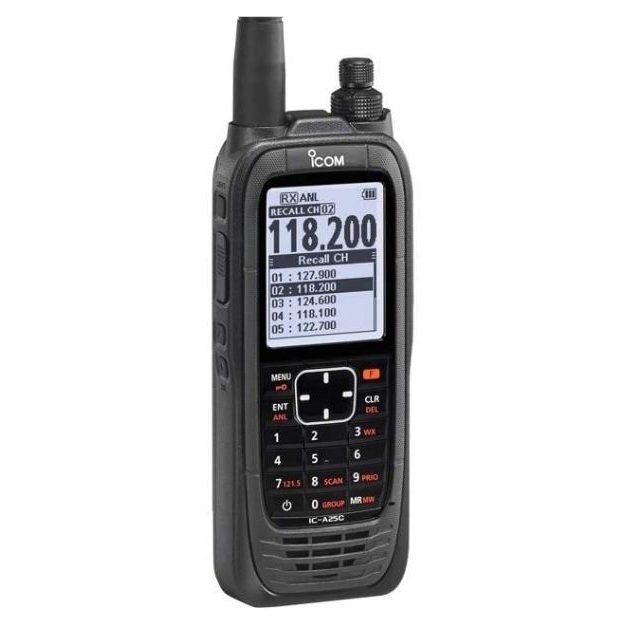
|
|
|
|
|
|||
1. Yaesu FTA750L Handheld VHF Aviation Radio
- Full dot-matrix LCD display
- VOR navigation display
- GPS position logging
- 66 integrated channels
Yaesu FTA750L aircraft handheld radio is a blend of tradition and innovation.
This handheld pilot radio offers 66 integrated channels for reliable navigation and without obstructions while communicating.
It includes a full dot-matrix LCD screen and a VOR navigation display for full communication while on an aircraft.
The NOAA Weather Channels offer full support on weather conditions, including alerts, and have the capability of programming up to 200 channels with 15 alphanumeric characters.
It’s characterized by loud audio features, meaning that it ensures clear and audible communication.
The easily operated menu system allows fast navigation through all of the features of the aviation handheld radio.
Specifications
Pros
- NOAA Weather channels and alerts
- Water protection
- Loud audio
- Waypoint navigation
Cons
- Pricey
2. Yaesu FTA550L Handheld VHF Pilot Radio
- ILS and VOR navigation
- Full dot-matrix screen
- Back-lit keypad
- 12 hours battery life
Yaesu FTA550L is one of the most revolutionary handheld aviation radios which combines traditional features with contemporary ones.
It offers clear communication through ILS and VOR navigation, and it includes a full dot-matrix display and a back-lit keypad.
These features allow the user to navigate and operate the menu system easily with clear visibility. Additionally, this handheld pilot radio includes NOAA Weather Channels which detect severe weather conditions and send you an alert, so you would stay clear of that area.
What’s more, the VHF transceiver comes with an antenna, meaning that the device can catch better signals. Yaesu FTA550L can be easily reprogrammed using optional PC software and a USB programming cable.
Specifications
Pros
- NOAA Weather channels
- NOAA Weather alert
- Comes with antenna
- Easily-operated menu system
Cons
- No simultaneous charge of the batteries and the radio
3. Icom IC-A25N VHF Airband Transceiver
- VOR navigation
- 200 channels
- Waterproof
- 2.3-inch LCD display
Icom IC-A25N is a waterproof handheld pilot radio which is characterized by a solid structure and long-lasting battery life, enabling you a long communication without obstructions.
The VOR indicators offer precise navigation, leading the pilot safely to the exact point where they are headed.
This handheld air-band radio offers a memory for up to 200 channels, which you can operate on a 2.3-inch LCD display. The LCD screen contributes to visible and easy in-flight operation.
The built-in features enable you to create flight plans on an iOS or Android device and then import them easily on the radio through Bluetooth.
The “Flip-flop” channel recall is an easy way to operate the air-band radio without any stress.
The weather channels available on the pilot radio can scan severe weather, and keep the pilot safe and away from those areas.
Specifications
Pros
- Built-in GPS
- Built-in Bluetooth
- “Flip-flop” channel recall
- Weather channels
Cons
- Costly
4. Icom IC-A16B VHF Air Band Handheld Radio
- 1500 mW loud audio
- Waterproof
- Built-in Bluetooth
- 17 hours battery life
This item is considered a state of the art device due to all of the built-in features and an easy way of use and programming.
The Icom IC-A16B offers a solid, compact, and waterproof structure that allows clear and safe communication in the air.
The 1500 mW loud audio and the Auto Noise Limiter (ANL) enable you to have receptive communication without obstacles and noise in the background.
Its battery life allows usage for up to 17 hours and it’s compatible with aviation headsets.
What’s more, you can use this aviation handheld radio hands-free since it has a voice-activated operation.
The LCD screen contributes to the good visibility of the programs and operation.
Specifications
Pros
- LCD and key backlight
- Compatible with aviation headsets
- VOX capability
- Auto Noise Limiter (ANL)
Cons
- Small display
5. Icom A25C Handheld Flight Radio
- VHF airband channels
- 300 memory channels
- IP57 dust and waterproof
- Automatic Noise Limiter (ANL)
The A25 series of handheld pilot radios are characterized by a solid structure and 6 watts of power.
This device is dust and waterproof and it offers a memory of 300 channels selected in 15 groups.
This aviation radio offers clear communication which is intensified by the usage of Automatic Noise Limiter (ANL) that blocks any background noises allowing you to have a firm signal and sound.
Also, it includes NOAA Weather channels and alerts which contribute to the safety of the pilot and prevent coming across severe weather.
The operation and programming of the device are easy due to its 2.3-inch LCD display, therefore you can easily navigate through it without any visibility obstacles.
Specifications
Pros
- NOAA Weather channels and alerts
- Emergency channel
- 2.3-inch LCD screen
- 121.5MHz emergency key
Cons
- Pricey
6. Icom IC-A25C Sport Aviation Radio Transceiver
- 6.0 W transmit power
- “Flip-flop” channel recall
- NOAA Weather alerts
- COM channels
Icom IC-A25C Sport uses a 6.0 W transmit power and 118.000–136.975MHz VHF Frequencies which contribute to impeccable communication and exquisite signals in a wide range.
This device offers safety in the air for pilots due to its features, such as an emergency channel and 121.5MHz emergency key, meaning that this handheld airband radio is a reliable tool for air traffic.
It’s constructed in a solid and waterproof manner, therefore there is a low risk of damage.
The radio includes audible button beeps and an LCD display which contributes to better operation of the device.
The Icom A25C Sport contains a battery meter, so you can always be aware of the battery life of your radio and avoid leaving yourself up in the air without communication.
Specifications
Pros
- Waterproof
- Emergency channel
- Audible button beeps
- Battery meter
Cons
- Short battery life
Handheld Aviation Radio Buying Guide
If you’re considering buying an aviation radio, there are a few things you have to familiarize yourself with before you do so.
There’s no need to worry if this is your first time purchasing something like this and you don’t have a clue which features you need.
We’ve prepared a list for you which will make your decision easier and will list everything you need to know about handheld pilot radios.
Even if you’re a rookie, this guide will come in handy and give every information required before buying this kind of device.
Be sure to read about each feature carefully, and see which one you really need, because some of these radios can be quite pricey.
Portability
Since we’re talking about portable aviation radios, their portability is the most important feature you have to consider before buying one.
Due to the reason that you have to carry it around all the time, you don’t want it to get in your way and interfere with your workflow. Therefore, you need something that isn’t bulky and it’s lightweight, so you could easily take it wherever you go.
So, when you decide to buy a portable aviation radio choose something that isn’t heavy and allows you to carry it easily.
In other words, choose something smaller that can offer you clear communication and it’s practical to use. There are a lot of options on the market, so this won’t be so difficult.
Brands
When it comes to brands, the choice is wide, and there are a lot of companies that offer these portable aviation radios.
However, if you’re aiming towards something that’s already tested and offers great quality, then there are two brands you need to consider – Icom and Yaesu.
These two have reached the top regarding handheld radio devices, and they certainly offer impeccable features and exquisite quality.
Icom
Icom is a company established in Osaka, Japan and it’s characterized by designing, engineering, and producing advanced and solid equipment for the radio industry.
Their handheld pilot radios are considered the best in this field, and they pride themselves on exceptional quality.
Each of the Icom products includes features that are necessary for air communication, and each of them contributes to the safety of the pilots and the flights.
Besides communication, they offer amazing features for navigation as well.
Therefore, if you choose Icom as your communication device, it definitely won’t be a mistake.
Yaesu
Yaesu as well comes from Japan, and it’s considered a big deal in the radio industry.
They offer solid and advanced devices with the most convenient features there are.
Their radios are known to produce impeccable communication in the air traffic, making the pilots feel safe during their flights.
If you choose a Yaesu device, you should expect exceptional durability of the product as well as a good design.
Yaesu pays attention to details, both for the look of the radio and its features.
So, if you decide on a Yaesu handheld aviation radio, you won’t regret it.
Frequency Range
When you choose to purchase an aviation radio, you have to familiarize yourself with its frequencies and how they work.
The navigational system operates through equipment called VHR that’s used in modern times.
This acronym stands for a very-high-frequency omnidirectional range and nowadays, there are numberless VOR stations around the world, of which 800 are only in America.
The Mhz on which these VOR stations operate is between 108.00 to 117.050, and these frequencies limit the interference in communication.
The signal your device gets depends on these frequencies, meaning that the higher frequency range your radio has, the better signal you will have.
The frequencies vary from radio to radio, but if you use your device only for communication then 108.00- 117.050 Mhz will be enough for you.
But, if you use other features such as navigation and weather channels, then you will need higher frequencies – up to 164 Mhz.
In other words, this is the most important feature of the aviation radio, and you should consider the frequency range first before making the purchase.
You wouldn’t want to end up without a signal up in the air, therefore choose wisely.
Navigation Features
There are two types of radios out on the market – those which are intended for communication only, and those which allow both communication and navigation.
You should expect that radios that include both of the features are going to be more expensive, but they will definitely prove to be very helpful.
The navigation functionality allows you to keep track of VOR stations and ILS, and also to give you information about IFR.
So, many people decide on a device that includes navigation because it makes their flying easier.
However, if you think that you can get on without navigation features, then you can save yourself some money.
As previously mentioned, the aviation radios that enable navigation as well can be quite expensive.
Therefore, before the purchase think about the importance of navigation and if it’s really going to be necessary to you.
Memory Channels
The memory channels are considered a modern feature in contemporary aviation radios, and their ability is known to be quite exceptional and handy.
This allows pilots to easily operate the radio and go through the channels they need.
Nowadays, most devices offer memory for up to 200 channels, and this enables the pilots to quickly find their needed channels.
This makes the usage of the air-band radio easier and makes flying less stressful and more convenient.
When it comes to air communication, this feature may not be on the top of the list, but it’s still considered very important and useful.
Battery Life
The batteries on which aviation radios work vary from device to device.
However, most of the manufacturers choose to include lithium-ion batteries in the radios due to the fact that they last longer than other types of batteries.
You can also find air-band radios that work on AA batteries, but many people decide on the lithium-ion ones because they offer longer battery life.
These are usually rechargeable, so you don’t have to replace them. This is especially convenient if you have longer trips.
If you opt for AA batteries, then you have to be prepared to always carry an extra pack of batteries because you never know when you’re going to run off of battery life.
This may sound more costly, but you’re the one who decides what works best for you.
Pricing Range
All of the items that we listed above start from $200 and they go up until about $500 or even more.
As you can see the handheld pilot radios aren’t really cheap, but they assure you safe communication up in the air.
You should take every safety measure there is when it comes to flying, and the essential one is communication.
However, you don’t have to opt for the most expensive one. Of course, the ones that are the most pricey have every feature included, but you may not need every one of them.
The choice is wide and just has to determine which features you need and what are your priorities.
Once you decide on this, the choice would be easier, and the price wouldn’t matter so much. You have to think about your safety first, and then about the money.
Our Verdict
To wrap this up, we can say that a handheld aviation radio is a very useful asset, and you can expect a lot of benefits from it.
It provides safety, it saves time and money, and it’s also a good practice for the student pilots.
When you decide to buy one, you should consider all the features that are mentioned above because they are the ones which will make your flying and communication easier.
Even if you’re new at this, following the tips of this guide might really help you, and you won’t be afraid whether you’re going to get ripped off and end up with a radio that isn’t worth it.
As you could see, the array of choices is wide and you have the opportunity to choose whatever suits you best.
But, be sure that buying yourself this kind of asset would never be regretful because feeling safe during flying is the most important thing for you and for the people around you.

